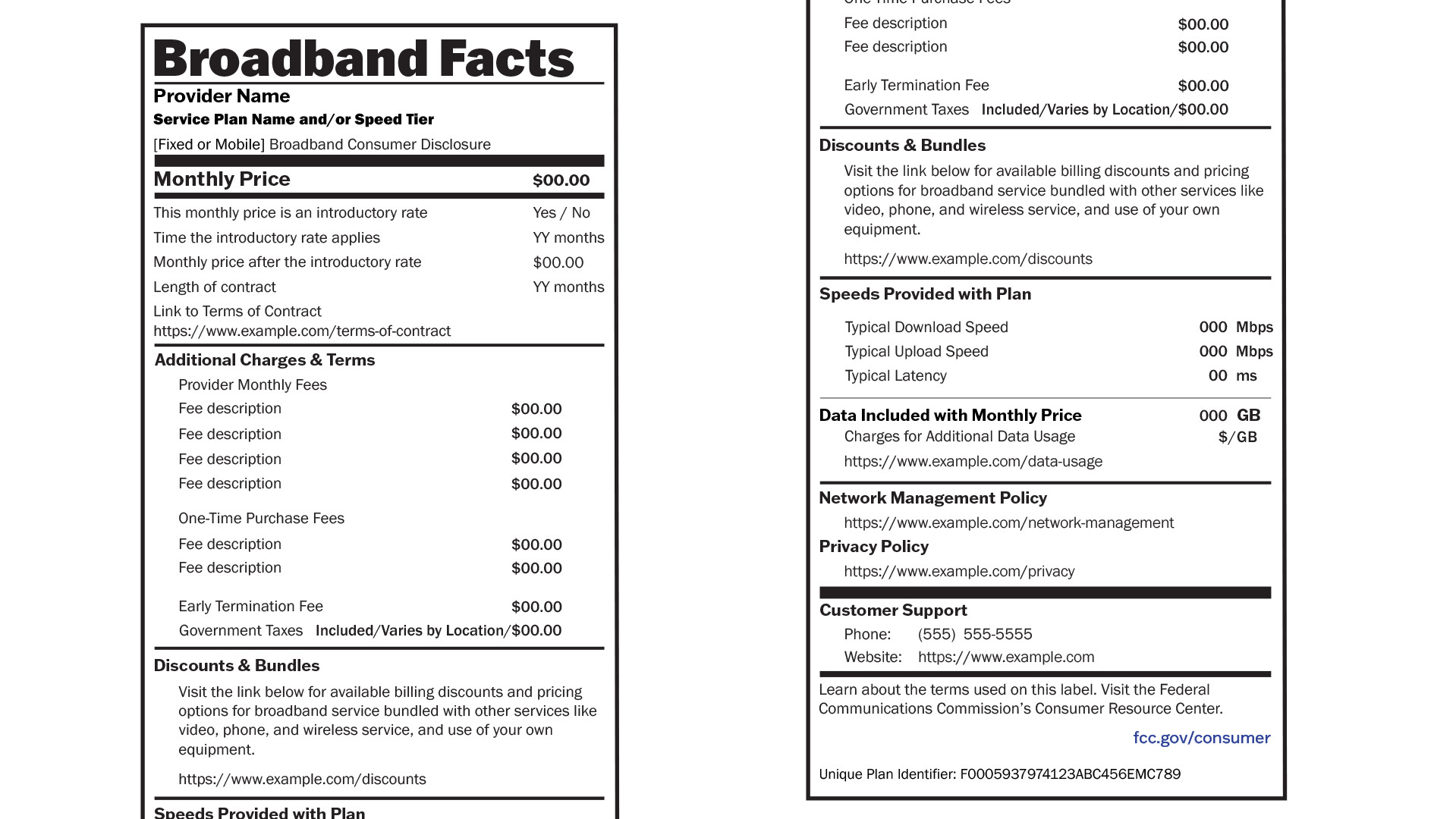Starting April 10, the Federal Communications Commission (FCC) will require Internet service providers (ISPs) to begin displaying information about their services in a clear and concise manner. The format of the details is similar to nutrition labels like those found on food boxes. However, instead of calories, carbs, and fat, the FCC’s broadband label shows monthly subscription costs, download speeds, and more.
The purpose of these new rules is to help customers choose the best ISP by knowing all the information a service has to offer, without misleading statements. This is meant to increase transparency between you and the company so you don’t get hit with fees you didn’t know existed.
Each sheet consists of six main sections. At the top you’ll see the name of your provider and the plan you’re paying for.
Below the title is “Monthly Fee,” which displays the monthly fee for the service, whether it is a trial fee, and the contract period. The following section describes additional charges you may incur. These range from early termination fees to government taxes. Additionally, links to all discounts and bundles offered by your ISP are displayed in the center of the label for easy access.

When you get to the bottom, you’ll see a small table showing typical upload and download speeds for your ISP service. There is no confusion regarding what you may experience. Everything is clear throughout the day. Typical delays for connections are also provided here.
Your monthly data limit is displayed next to any additional charges that apply if you exceed the limit. Finally, there are links at the bottom to the company’s policy page and customer support phone number in case you want to double-check the information displayed.
New rules, more transparency
The Broadband Label is the result of the FCC’s nearly decade-long battle to force ISPs to be more transparent with their customers. Major providers fought for years to get the commission to repeal the new rules.
In 2023, ISP representatives argued that listing all this information could create “unnecessary complexity.” Comcast was also accused by the FCC of “trying to create loopholes” to avoid releasing all of these details. Clearly, despite the complaints, the organization moved forward. .
Not all ISPs are so hesitant to adopt Nutrition-style sheets. In fact, Google was one of the first companies to adopt them. Last year, the tech giant published “GFiber Nutrition Labels” much earlier than any other ISP.
Google revealed the facts about its internet service, from monthly fees to expected download speeds. Since then, we’ve seen Verizon, T-Mobile, and others embrace this mandate by writing their own fact sheets.
For now, the Commission’s decision applies only to large ISPs. “Small providers with fewer than 100,000 subscribers must comply by October 10, 2024.” If a service brand in your area isn’t complying or is “posting inaccurate pricing information,” the FCC wants you to report it. Fill out our consumer complaint form.
If you want to improve your home internet connection, check out TechRadar’s list of the best WiFi routers of 2024.

